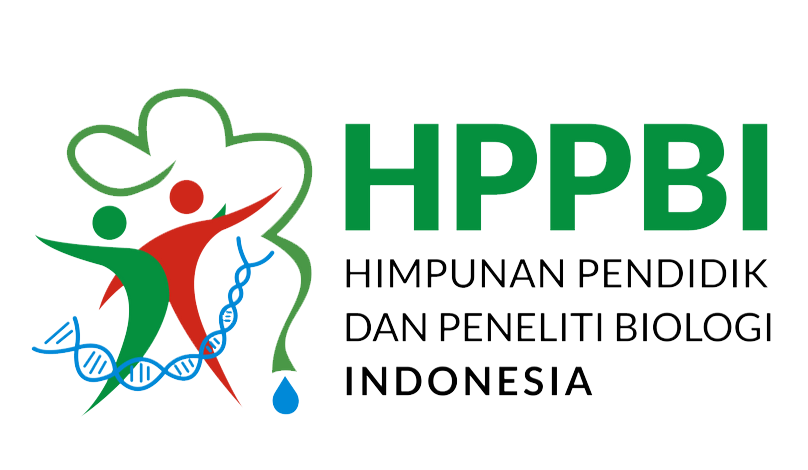The Correlation between Critical and Creative Thinking Skills to Learning Outcomes in Cell and Tissue Materials
Abstract
Optimizing student competence begins with empowering fundamental skills, namely critical and creative thinking skills. This study aims to investigate the correlation between critical thinking skills and creative thinking skills simultaneously on cognitive learning outcomes of 162 students in grades XI and XII who have learned cell and tissue material at the Movement School in Biringkanaya District, Makassar City in the even school year 2022/2023. Research data were collected using integrated essay questions as many as 10 items that were valid (4.73) and reliable (0.853). The data obtained from the research sample in the form of quantitative data will be analyzed with two kinds of analysis techniques, namely descriptive analysis and inferential analysis. The results of statistical inferential analysis showed a correlation between critical thinking skills, creative thinking skills, and cognitive learning outcomes of students in movement schools on cell and tissue material (=0.730, <0.001, N= 162). The correlation is positive with a regression equation Ŷ= 7.796 + 0.322X1 + 0.402X2 with an effective contribution of 53.26%. Therefore, learning needs to empowering critical and creative thinking skills to support the optimization of students in facing the challenges of everyday life problem.
Downloads
References
Adhani, A., & Rupa, D. (2020). Analisis Pemahaman Konsep Mahasiswa Pendidikan Biologi pada Matakuliah Fisiologi Tumbuhan. Quantum: Jurnal Inovasi Pendidikan Sains, 11(1), 18. https://doi.org/10.20527/quantum.v11i1.8035
Agustiana, I. G. A. T., Agustini, R., Ibrahim, M., & Tika, I. N. (2020). Efektivitas Model OPPEMEI untuk Meningkatkan Kemampuan Berpikir Kreatif Mahasiswa. Journal of Education Technology, 4(2), Article 2. https://doi.org/10.23887/jet.v4i2.25343
Aisyah, A. N. I., Hasyim, M., & Jumriani, H. (2023). Penerapan Model Project Based Learning Berbantuan Media Canva Untuk Meningkatkan Kemampuan Berpikir Kreatif (Indikator Kelancaran) Peserta Didik. Jurnal Pemikiran dan Pengembangan Pembelajaran, 5(2), Article 2. https://doi.org/10.31970/pendidikan.v5i2.749
Alhassan, I., Islam, K. M. A., & Haque, M. S. (2021). Sustainability Reporting and Financial Performance of Listed Industrial Goods Sector in Nigeria. International Journal of Accounting & Finance Review, 9(1), 46–56. https://doi.org/10.46281/ijafr.v9i1.1541
Anderson, & Krathwohl. (2017). Kerangka Landasan untuk Pembelajaran, pengajaran, dan Asesmen Revisi Taksonomi Pendidikan Bloom (2nd ed.). Pearson Education.
Annisa, L., Oktaviana, C., & Habibi, A. A. (2020). Hubungan Keterampilan Berpikir Kritis Dengan Hasil Belajar Peserta Didik. Edubiologica Jurnal Penelitian Ilmu Dan Pendidikan Biologi, 8(1), 35–37.
Azis, A. A., & Mu’nisa, A. M. (2021). Peningkatan Motivasi, Aktivitas dan Hasil Belajar Biologi Melalui Penerapan Teknik Mind Mapping pada Materi Sistem Ekskresi Siswa Kelas XI IPA B SMA Negeri 2 Sengkang. Science Education and Learning Journal, 1(2 (Novembe), 42–56.
Bahri, A. (2016). Strategi Pembelajaran Reading Questioning and Answering (RQA) pada Perkuliahan Fisiologi Hewan untuk Meningkatkan Hasil Belajar Kognitif Mahasiswa. BIONATURE ‘Jurnal Kajian, Penelitian, Dan Pengajaran Biologi’, 17(2).
Bahri, A., Abrar, A., & Arifin, A. N. (2021). Needs Analysis of Development Higher Order Thinking Skills-based E-module for Students High School. Indonesian Journal of Educational Studies, 24(1), 72–79.
Cahyani, E. R., Martini, M., & Purnomo, A. R. (2022). Analisis Kemampuan Berpikir Kreatif Siswa SMP terhadap Konsep Pencemaran Lingkungan Ditinjau dari Perbedaan Gender. PENSA: E-JURNAL PENDIDIKAN SAINS, 10(1).
Cahyono, B. D. T., & Dwikoranto, D. (2021). Implementasi Model Pembelajaran Problem Based Learning untuk Meningkatkan Kemampuan Berfikir Kritis pada Siswa. IPF : Inovasi Pendidikan Fisika, 10(1), 1–7.
Ennis, R. H. (1993). Critical Thinking Assessment. Theory Into Practice, 32(3), 179–186. https://doi.org/10.1080/00405849309543594
Fajarianingtyas, D. A., & Hidayat, J. N. (2023). Pengembangan Media Pembelajaran Berbasis Web Biologi Dasar untuk Meningkatkan Kemampuan Pemecahan Masalah Mahasiswa IPA. Jurnal Kiprah, 11(1), Article 1. https://doi.org/10.31629/kiprah.v11i1.5357
Fatmawati, A., Zubaidah, S., Mahanal, S., & Sutopo. (2019). Critical Thinking, Creative Thinking, and Learning Achievement: How They are Related. Journal of Physics: Conference Series, 1417(1), 012070. https://doi.org/10.1088/1742-6596/1417/1/012070
Febriyanti, S. A., & Wulandari, F. (2021). Hubungan Berpikir Kreatif Melalui Model Mind Mapping dengan Hasil Belajar Siswa Sekolah Dasar. PEDAGOGIKA, 1(2), 152–160. https://doi.org/10.37411/pedagogika.v12i2.871
Fitroh, A., Azis, A. A., & Marliyah, S. (2022). Analisis Penerapan Model Pembelajaran Problem Based Learning dalam Mengerjakan LKPD Materi Struktur dan Fungsi Tumbuhan. Jurnal Profesi Kependidikan, 3(1 Apr), Article 1 Apr. https://ojs.unm.ac.id/JPK/article/view/27515
Handayani, S. A., Rahayu, Y. S., & Agustini, R. (2021). Students’ Creative Thinking Skills in Biology Learning: Fluency, Flexibility, Originality, and Elaboration. Journal of Physics: Conference Series, 1747(1), 012040. https://doi.org/10.1088/1742-6596/1747/1/012040
Haris, A. (2022). Proses Kognitif Dalam Desain Pembelajaran Berbasis Masalah. JISIP (Jurnal Ilmu Sosial Dan Pendidikan), 6(1), Article 1. https://doi.org/10.58258/jisip.v6i1.2820
Hart, D. (1994). Authentic Assessment: A Handbook for Educators. Assessment Bookshelf Series. Dale Seymour Publications, 10 Bank Street, White Plains, NY 10602. Tel: 800-872-1100 (Toll Free). https://eric.ed.gov/?id=ED447179
Hidayati, N., & Indriana, L. (2022). Critical Thinking Skills Student of Class XI SMAN 4 Pekanbaru in learning Biology TA.2020/2021. Biology and Education Journal, 2(1), Article 1. https://doi.org/10.25299/baej.2022.9915
Hikmawati, V. Y., & Ningsih, Y. S. (2020). Blended-Problem Based Learning: Critical Thinking Skills and Information Literacy in Cell Learning. Jurnal BIOEDUKATIKA, 8(2), Article 2. https://doi.org/10.26555/bioedukatika.v8i2.14315
Kardoyo, Nurkhin, A., Muhsin, & Pramusinto, H. (2020). Problem-Based Learning Strategy: Its Impact on Students’ Critical and Creative Thinking Skills. European Journal of Educational Research, 9(3), 1141–1150. https://doi.org/doi: 10.12973/eu-jer.9.3.1141
Kilag, O. K., Miñoza, J., Comighud, E., Amontos, C., Damos, M., & Abendan, C. F. (2023). Empowering Teachers: Integrating Technology into Livelihood Education for a Digital Future. Excellencia: International Multi-Disciplinary Journal of Education (2994-9521), 1(1).
Kurniawati, F. N. A. (2022). Meninjau Permasalahan Rendahnya Kualitas Pendidikan di Indonesia dan Solusi. Academy of Education Journal, 13(1), Article 1. https://doi.org/10.47200/aoej.v13i1.765
Kusuma, A. S., Nisa, K., & Baskara, Z. W. (2021). Trend Penelitian Skripsi Mahasiswa PGSD Universitas Mataram di Masa Pandemi Covid-19. Jurnal Ilmiah Profesi Pendidikan, 6(3), Article 3. https://doi.org/10.29303/jipp.v6i3.196
Levin, M. (2021). Life, Death, and Self: Fundamental Questions of Primitive Cognition Viewed Through The Lens of Body Plasticity and Synthetic Organisms. Biochemical and Biophysical Research Communications, 564, 114–133. https://doi.org/10.1016/j.bbrc.2020.10.077
Listiana, L., & Bahri, A. (2019). Empowering Student’s Creative Thinking Skill in Biology Classroom: Potential of Group Investigation Combined with Think Talk Write (GITTW) Strategy. Humanities & Social Sciences Reviews, 7(3).
Mahanal, S., Zubaidah, S., Sumiati, I. D., Sari, T. M., & Ismirawati, N. (2019). RICOSRE: A Learning Model to Develop Critical Thinking Skills for Students with Different Academic Abilities. International Journal of Instruction, 12(2), 417–434.
Maison, M., Ernawati, M. D. W., Budiarti, R. S., Kurniawan, Y., Okta, W., Ningsih, Y., Puspitasari, T. O., Jannah, N., & Putra, D. S. (2019). Learning In Nature Science: Social Implications, Normality Of Scientist, Attitudes Towards Investigation Of Natural Science, And Interest Adds To Science Learning Time. International Journal of Scientific & Technology Research, 8(12), 1478–1484.
Mariana, D. (2021). Pengaruh Kepemimpinan Kepala Sekolah Terhadap Efektivitas Sekolah Penggerak dalam Meningkatkan Kualitas Pendidikan. 5.
Masbullah, & Bahri, S. Y. (2022). Analisis Analisis Perencanaan Sumber Daya Manusia (SDM) Dalam Peningkatan Mutu Pendidikan Di Sma Muhammadiyah Selong. MAMEN: Jurnal Manajemen, 1(1), Article 1. https://doi.org/10.55123/mamen.v1i1.26
Maulina, D., Aini, V., Yolida, B., & Marpaung, R. R. T. (2022). Guided Inquiry Model Assisted HOTS-Based Worksheet for Critical Thinking Ability in Online Learning During Pandemic Covid-19. Jurnal BIOEDUKATIKA, 10(1), Article 1. https://doi.org/10.26555/bioedukatika.v10i1.21532
Megati, A., Prasetyo, E., Gleko, G., & Wungukung, O. (2021). Hubungan Kemampuan Berpikir Kritis Terhadap Hasil Belajar Siswa Kelas X IPA Pada Materi Reaksi Redoks Di SMA Negeri 1 Talibura. CHEMUR, 4(1), Article 1.
Mulyani, S., Nurmeta, I. K., & Maula, L. H. (2023). Analisis Implementasi Profil Pelajar Pancasila di Sekolah Dasar. Jurnal Educatio FKIP UNMA, 9(4), Article 4. https://doi.org/10.31949/educatio.v9i4.5515
Munandar, U. (2016). Pengembangan Kreativitas Anak Berbakat. Rineka Cipta. http://repo.iainbatusangkar.ac.id/xmlui/handle/123456789/3950
Mursid, R. (2019). The Effect of Learning Model Based on Higher Order Thinking Skills (HOTS) with Multimedia and Creative Thinking Abilities on Learning Outcomes of Vocational Learning Design. 1–5. https://www.atlantis-press.com/proceedings/aisteel-19/125931943
Mursidah, S., Susilo, H., & Corebima, A. D. (2019). Hubungan antara Keterampilan Berpikir Kritis dan Keterampilan Berkomunikasi dengan Retensi Siswa dalam Pembelajaran Biologi melalui Strategi Pembelajaran Reading Practicing Questioning Summarizing and Sharing. Jurnal Pendidikan: Teori, Penelitian, dan Pengembangan, 4(8), Article 8. https://doi.org/10.17977/jptpp.v4i8.12676
Ng, P. M. L., Chan, J. K. Y., & Lit, K. K. (2022). Student learning performance in online collaborative learning. Education and Information Technologies, 27(6), 8129–8145. https://doi.org/10.1007/s10639-022-10923-x
Ng, W. L., Chan, A., Ong, Y. S., & Chua, C. K. (2020). Deep Learning for Fabrication and Maturation of 3D Bioprinted Tissues and Organs. Virtual and Physical Prototyping, 15(3), 340–358. https://doi.org/10.1080/17452759.2020.1771741
Nomleni, R. (2023). The Correlation of Social Environment Toward Children’s Learning Achievement at SMA PGRI Kupang. SocioEdu: Sociological Education, 4(1), 16–20. https://doi.org/10.59098/socioedu.v4i1.871
Nurhasnawati, N., Suhertina, S., Herlinda, F., Arisanti, D., Murny, M., & Martius, M. (2023). Kontribusi Kemampuan Berpikir Kritis dan Ketertarikan Keagamaan terhadap Hasil Belajar Agama Islam. JPPI (Jurnal Penelitian Pendidikan Indonesia), 9(1), 12–17. https://doi.org/: https://doi.org/10.29210/ 189900
Oktafiani, R., Febriyana, A., Haka, N. B., & Kesumawardani, A. D. (2025). Pengaruh Model Pembelajaran Problem Based Learning Berbantu Media Augmented Reality untuk Meningkatkan Higher Order Thinking Skill Kelas XI Pada Meteri Sel di SMAN 1 Abung Selatan Lampung Utara. BIOPENDIX: Jurnal Biologi, Pendidikan Dan Terapan, 11(2), Article 2. https://doi.org/10.30598/biopendixvol11issue2page144-148
Pertiwi, D. A., Hidayat, M., & Rasmi, D. P. (2021). Identifikasi Tingkat Kemampuan Berpikir Kritis Siswa pada Materi Fluida Statis. Jurnal Pendidikan Fisika Tadulako Online, 9(1), 57–62.
Pilu, R. O. U., Makaborang, Y., & Ndjoeroemon, Y. (2025). Penggunaan Metode Peta Konsep Ditambah dengan Media Leaflet untuk Meningkatkan Kualitas Pembelajaran Siswa Kelas IX di SMP Negeri 1 Kambera. BIOPENDIX: Jurnal Biologi, Pendidikan Dan Terapan, 11(2), Article 2. https://doi.org/10.30598/biopendixvol11issue2page243-249
Prihatin, A. I., Komala, R., Ristanto, R. H., & Saifuddin, M. F. (2022). Relationship of Metacognitive Skills, Critical Thinking, and Students’ Knowledge of Ecosystem Concepts. Jurnal BIOEDUKATIKA, 10(2), Article 2. https://doi.org/10.26555/bioedukatika.v10i2.23397
Puspitasari, Y., Reza, S. P. K., Bachtiar, Y., & Prayitno, B. A. (2019). Identifikasi Miskonsepsi Materi Jaringan Tumbuhan pada Mahasiswa Pendidikan Biologi di Salah Satu Universitas di Surakarta. BIOEDUKASI: Jurnal Pendidikan Biologi, 10(2), Article 2. https://doi.org/10.24127/bioedukasi.v10i2.2494
Ramadhana, F., Adnan, A., & Azis, A. A. (2022). Uji Validitas Pengembangan E-LKPD Berorientasi Hots Materi Sistem Pernapasan Sma Kelas Xi. KROMATIN : Jurnal Biologi Dan Pendidikan Biologi, 3(1), Article 1. https://journal.unismuh.ac.id/index.php/kromatin/article/view/8917
Rashidov, A. (2020). Development of Creative and Working with Information Competences of Students in Mathematics. 8(3).
Rauf, J., Halim, S. N. H., & Mahmud, R. S. (2020). Pengaruh Kemampuan Berpikir Divergen dan Kemandirian Belajar terhadap Hasil Belajar Matematika Siswa. Mandalika Mathematics and Educations Journal, 2(1), 1–9. https://doi.org/10.29303/jm.v2i1.1776
Rini, A. F., & Budijastuti, W. (2022). Pengembangan Instrumen Soal Hots untuk Mengukur Keterampilan Pemecahan Masalah pada Materi Sistem Gerak Manusia. Berkala Ilmiah Pendidikan Biologi (BioEdu), 11(1), 127–137. https://doi.org/10.26740/bioedu.v11n1.p127-137
Sakdiah, H., Rahimi, A., Darlis, A., Ammar, S. A., & Daulay, D. A. (2023). Sekolah Penggerak Sebagai Upaya Peningkatan Kualitas Pendidikan. Jurnal Pendidikan Dan Konseling (JPDK), 5(1), Article 1. https://doi.org/10.31004/jpdk.v5i1.11012
Samudera, W. (2020). Pengaruh Gender Terhadap Kemampuan Berpikir Kreatif Peserta Didik SMA di Kota Mataram. Indonesian Journal of Teacher Education, 1(2), 87–92.
Sari, D. N., Ningsih, K., & Wahyuni, E. S. (2023). Kelayakan LKPD Berbasis Inkuiri Terbimbing untuk Melatihkan Keterampilan Proses Sains pada Materi Sistem Organisasi Kehidupan. Bioscientist : Jurnal Ilmiah Biologi, 11(2), 1385–1399. https://doi.org/10.33394/bioscientist.v11i2.9286
Satriawan, W., Santika, I. D., & Naim, A. (2021). Guru Penggerak Dan Transformasi Sekolah Dalam Kerangka Inkuiri Apresiatif. Al-Idarah : Jurnal Kependidikan Islam, 11(1), Article 1. https://doi.org/10.24042/alidarah.v11i1.7633
Setyani, A. I., Putri, D. K., Pramesti, R. A., Suryani, S., & Ningrum, W. F. (2023). Pembelajaran Biologi dalam Kurikulum Merdeka di Sekolah Urban. DIAJAR: Jurnal Pendidikan Dan Pembelajaran, 2(2), Article 2. https://doi.org/10.54259/diajar.v2i2.1364
Siburian, J., Corebima, A. D., İbrohim, İ., & Saptasari, M. (2019). The Correlation Between Critical and Creative Thinking Skills on Cognitive Learning Results. Eurasian Journal of Educational Research, 19(81), Article 81. https://doi.org/10.14689/ejer.2019.81.6
Sitohang, M. S., Putri, W. N., Sueng, Y., Tarigan, R. S. B., Pasaribu, C. E., Mukra, R., & Arwita, W. (2025). Analysis of Biology Learning Resources and Materials in PJBL, PBL, and Deep Learning in Class X in Biology Teachers and Students of SMA Negeri 2 Lubuk Pakam. BIOPENDIX: Jurnal Biologi, Pendidikan Dan Terapan, 12(1), Article 1. https://doi.org/10.30598/biopendixvol12issue1page16-24
Supena, I., Darmuki, A., & Hariyadi, A. (2021a). The Influence of 4C (Constructive, Critical, Creativity, Collaborative) Learning Model on Students’ Learning Outcomes. International Journal of Instruction, 14(3), 873–892. https://doi.org/10.29333/iji.2021.14351a
Supena, I., Darmuki, A., & Hariyadi, A. (2021b). The Influence of 4C (Constructive, Critical, Creativity, Collaborative) Learning Model on Students’ Learning Outcomes. International Journal of Instruction, 14(3), 873–892.
Tuaputty, H., Leasa, M., Corebima, A. D., & Batlolona, J. R. (2021). The Correlation between Critical Thinking Skills and Cognitive Learning Outcomes. İlköğretim Online, 20(1), 302–317. https://doi.org/10.17051/ilkonline.2021.01.029
Utami, S. W., Sunandar, A., & Kurniawan, A. D. (2020). Application of Two Problem Solving Cycles to Students’ Higher-Order Thinking Skills on Reproductive System Material. Journal of Biological Education Indonesia (Jurnal Pendidikan Biologi Indonesia), 6(3), 383–388.
Yolanda, S. B., Mahardika, I. K., & Wicaksono, I. (2021). Penggunaan Media Video Sparkol terhadap Kemampuan Berpikir Kreatif Siswa pada Pembelajaran IPA di SMP. Jurnal Pendidikan Fisika, 9(2), Article 2. https://doi.org/10.24127/jpf.v9i2.3780
Zubaidah, S., Mahanal, S., Mistianah, & Fauzi, A. (2020). Critical Thinking Embedded Essay Test. 171–177. https://doi.org/10.2991/absr.k.200807.036
Copyright (c) 2025 Nur Aisyah Ainun, Arsad Bahri, Andi Asmawati Azis

This work is licensed under a Creative Commons Attribution-ShareAlike 4.0 International License.
Authors who publish with this Journal agree to the following terms:
- Author retain copyright and grant the journal right of first publication with the work simultaneously licensed under a creative commons attribution license that allow others to share the work within an acknowledgement of the work’s authorship and initial publication of this journal.
- Authors are able to enter into separate, additional contractual arrangement for the non-exclusive distribution of the journal’s published version of the work (e.g. acknowledgement of its initial publication in this journal).
- Authors are permitted and encouraged to post their work online (e.g. in institutional repositories or on their websites) prior to and during the submission process, as it can lead to productive exchanges, as well as earlier and greater citation of published works

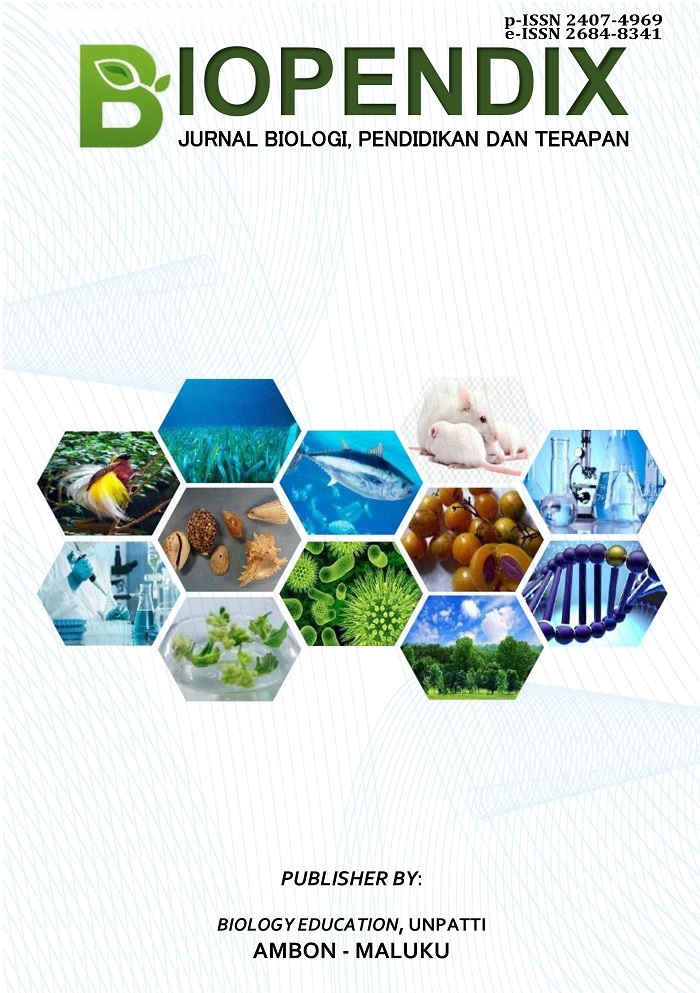
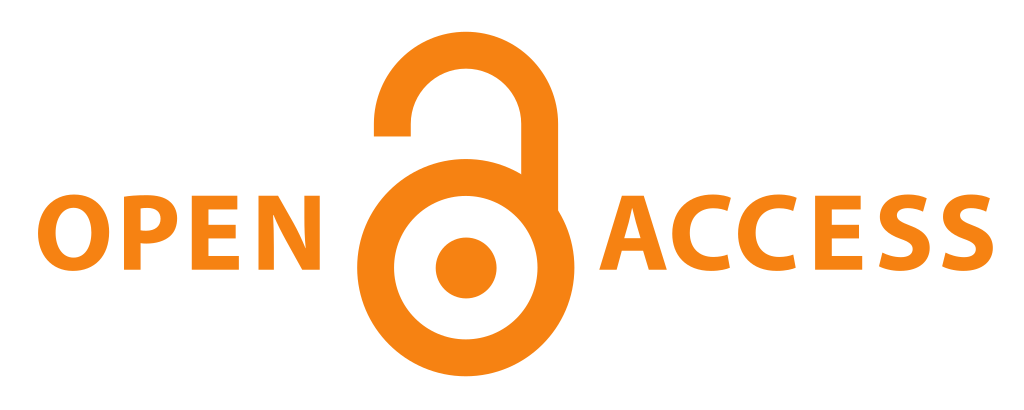
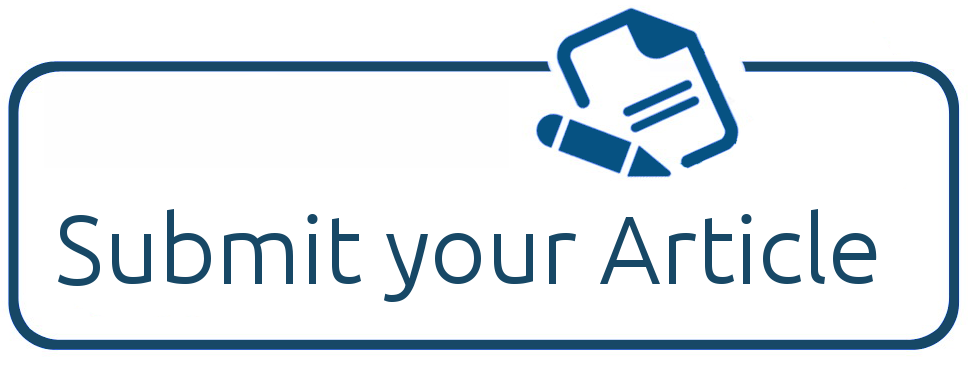
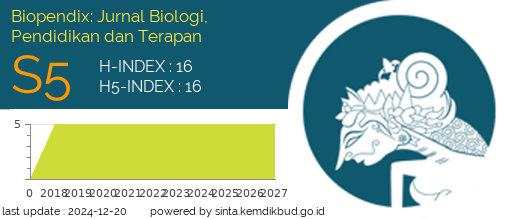
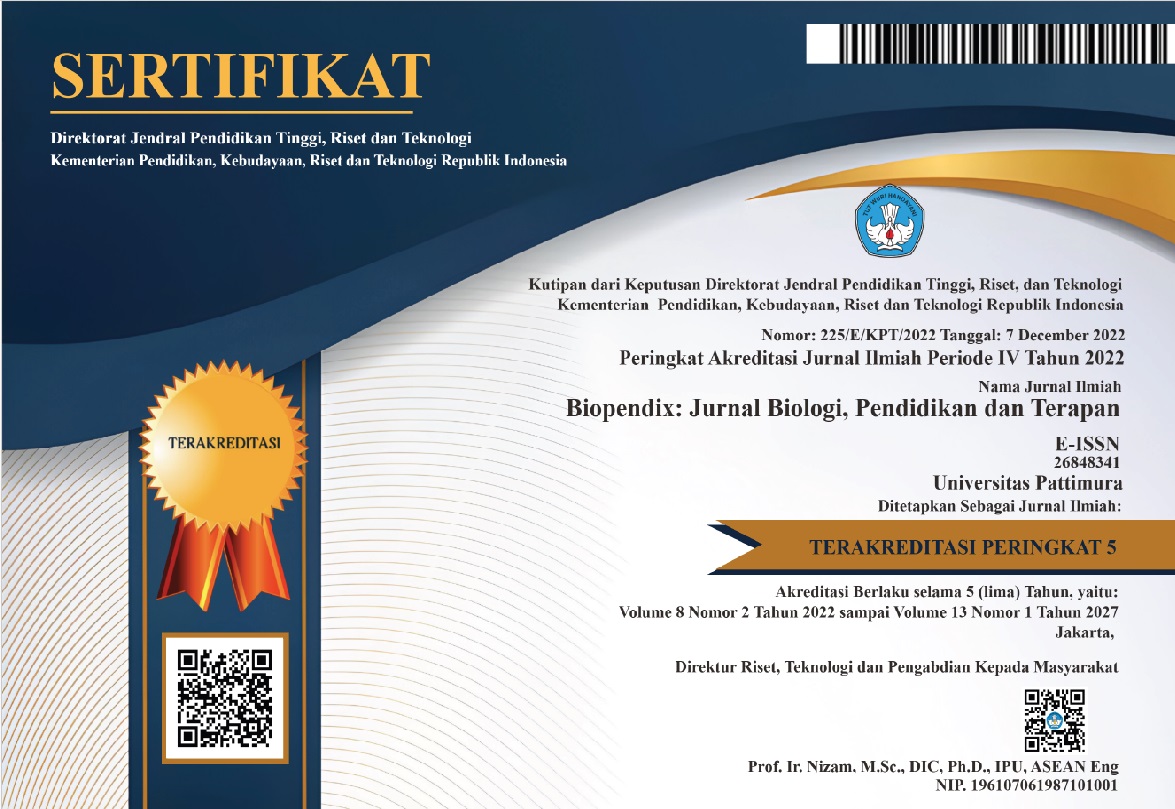 2
2




